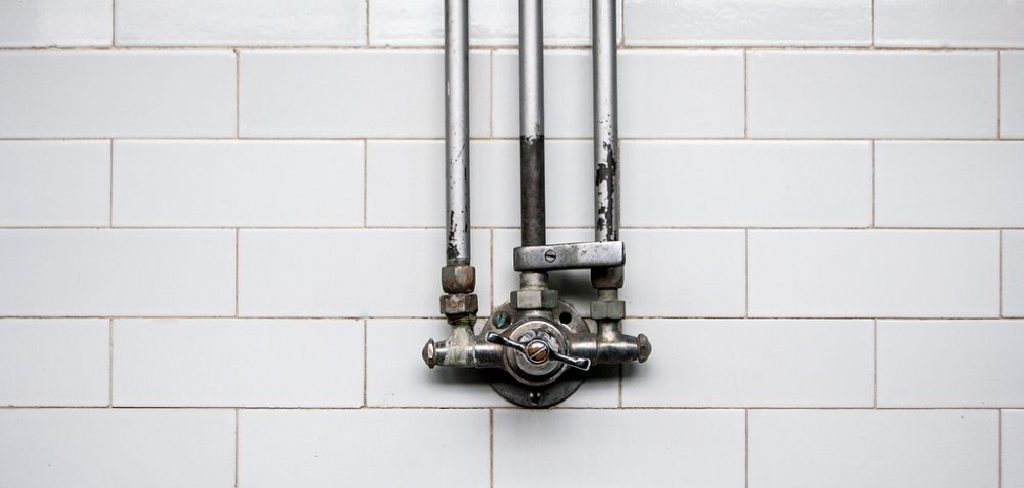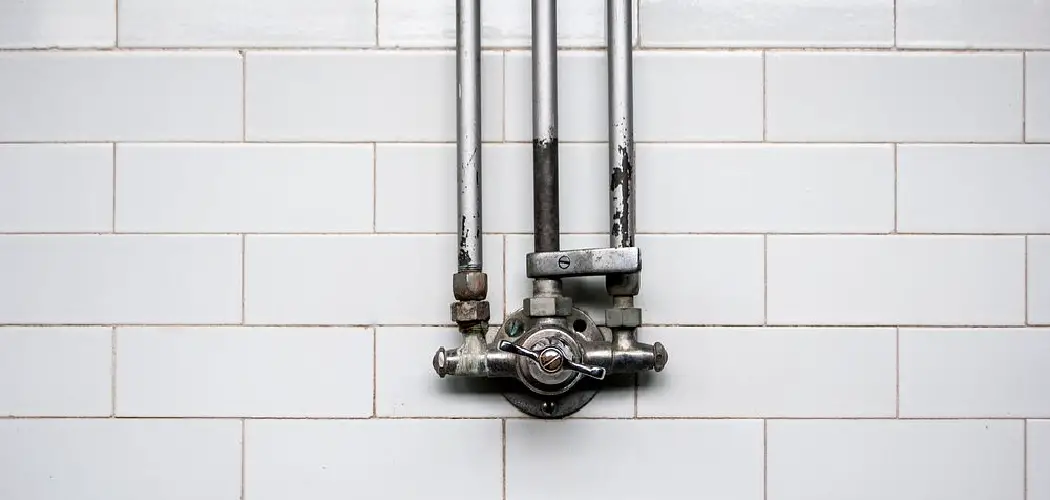To frame around pipes, measure and cut lumber to fit around the pipe, leaving enough space for insulation. Attach the lumber to surrounding framing using nails or screws.
Framing around pipes is an essential task when constructing or renovating a building. Whether it’s water pipes, electrical conduits, or heating ducts, properly framing around them ensures they are secure and protected. By following a few simple steps, you can frame around pipes with ease.
This article will guide you through the process, providing you with valuable tips and techniques to ensure a successful framing job. From measuring and cutting the wood to attaching it securely, we will cover all the necessary steps to help you frame around pipes like a pro. So let’s get started and learn how to frame around pipes effectively.

Understanding The Importance Of Framing Around Pipes
Discover the significance of properly framing around pipes and learn valuable techniques on how to do it effectively. Understand the importance of this process for ensuring structural integrity and functionality in your plumbing system.
Understanding the Importance of Framing around Pipes
When it comes to framing around pipes in your home, it may not seem like a priority. However, understanding the importance of proper framing around pipes can save you from potential headaches and costly repairs in the future. In this section, we will delve into why proper framing is essential and common mistakes to avoid.
Why Proper Framing around Pipes is Essential
Proper framing around pipes is not just about aesthetics; it serves a practical purpose. Here’s why it’s essential:
1. Prevents Structural Damage: Framing around pipes provides support and stability to prevent potential structural damage. Pipes can exert pressure on surrounding walls and flooring, causing cracks or even collapsing over time. By properly framing around pipes, you ensure the integrity of your home’s structure.
2. Enhances Safety: Framing around pipes helps minimize the risk of accidents or injuries. Pipes without proper framing can protrude into walkways or create obstacles, leading to trips or falls. Ensuring pipes are safely enclosed within the framing can protect you and your family from harm.
3. Facilitates Maintenance and Repairs: When maintenance or repairs are required, having easy access to the pipes is crucial. Proper framing allows for convenient access to the pipes without causing damage to the surrounding materials. This accessibility ensures that repairs can be conducted efficiently, saving you time and money.
Common Mistakes to Avoid in Framing around Pipes
While understanding the importance of framing around pipes is crucial, it’s equally essential to avoid common mistakes that can compromise its effectiveness. Here are some mistakes to steer clear of:
1. Insufficient Clearance: One common mistake is not providing enough clearance around the pipes. It’s vital to leave ample space between the pipes and the framing to avoid unnecessary friction and potential damage. Ensure there is room for expansion and contraction caused by temperature changes.
2. Improper Attachment: Misguided attachment techniques can lead to weak or unstable framing. Avoid using nails alone to secure the framing; instead, use appropriate fasteners like screws or brackets. This ensures a secure and durable frame around the pipes.
3. Ignoring Plumbing Codes: Ignoring plumbing codes can have severe consequences. Each jurisdiction may have specific regulations on framing around pipes, including minimum clearances and materials to be used. Make sure to adhere to these codes to ensure compliance and prevent future complications.
In conclusion, framing around pipes is not just about aesthetics; it plays a vital role in maintaining the structural integrity of your home, enhancing safety, and facilitating maintenance and repairs. By understanding the importance of proper framing and avoiding common mistakes, you can ensure a reliable and durable framework that will stand the test of time.
Essential Tips For Framing Around Pipes
When it comes to framing around pipes, there are a few essential tips that can make the process much smoother. Whether you are installing drywall or constructing a new wall, dealing with pipes can be challenging. However, with these tips, you can effectively frame around the pipes without compromising the structure or functionality. In this article, we will discuss the essential tips for framing around pipes, including identifying the type and placement of pipes, determining the size and dimensions of the frame, and choosing the right materials for the frame.
Identifying The Type And Placement Of Pipes
Before you start framing around the pipes, it is crucial to identify the type and placement of the pipes. This will help you in determining the best approach to frame around them. Different types of pipes, such as water pipes, drainage pipes, or electrical pipes, require different considerations.
To identify the type of pipes, examine the color, thickness, and markings on the pipes. Water pipes are typically blue, while drainage pipes are usually white or orange. Electrical pipes may have specific markings indicating their purpose.
Once you have identified the type of pipes, carefully analyze their placement. Take note of their distance from the walls, any bends or turns, and other obstacles they may pose. This information will guide you in determining the size and dimensions of the frame.
Determining The Size And Dimensions Of The Frame
Determining the size and dimensions of the frame is crucial to ensure a proper fit around the pipes. Measure the distance between the pipes and the walls, as well as the space required for any bends or turns. T
| Pipe Type | Frame Dimensions |
|---|---|
| Water pipes | Add 2 inches to the pipe diameter for clearance |
| Drainage pipes | Add 3 inches to the pipe diameter for clearance |
| Electrical pipes | Add 1 inch to the pipe diameter for clearance |
Refer to Table 1 for a general guideline on adding clearance to the pipe diameter based on the type of pipes. Keep in mind that these measurements may vary based on specific requirements.
Choosing The Right Materials For The Frame
When framing around pipes, it is crucial to choose the right materials that can accommodate the pipes and provide structural integrity. The materials you select will depend on the type and size of the pipes, as well as the overall design of your project.
Wood or metal studs are commonly used for framing walls, and they can be adapted to fit around pipes. In some cases, you may need to use specialized framing tools, such as pipe clips or brackets, to secure the frame around the pipes.
Additionally, consider using insulation materials to protect the pipes and reduce heat loss or condensation. Insulating around the pipes can also help dampen noise transmission, depending on the type of insulation used.
By following these essential tips for framing around pipes, you can ensure a successful and efficient framing process. Identifying the type and placement of pipes, determining the size and dimensions of the frame, and choosing the right materials are vital steps in framing around pipes. Remember to pay attention to detail and consult professionals when needed to ensure the best results.
Step-by-step Guide To Framing Around Pipes
Framing around pipes is a crucial step when it comes to building walls or partitions. It requires careful planning and precise measurements in order to create a sturdy and seamless frame. In this step-by-step guide, we will walk you through the process of framing around pipes, from measuring and marking the pipe locations to securing the frame and adding finishing touches.
Measuring And Marking The Pipe Locations
Before you begin framing around pipes, it’s essential to accurately measure and mark the locations of the pipes. This will help you determine the dimensions and position of the frame. Here’s how you can do it:
- Gather all the necessary tools, including a tape measure and a marker.
- Carefully measure the diameter of the pipe using the tape measure.
- Using the marker, mark the center of the pipe on the wall where the frame will be built.
- Repeat this process for each pipe that needs to be framed.
Cutting And Assembling The Frame
Once you have measured and marked the pipe locations, it’s time to cut and assemble the frame around the pipes. Follow these steps to ensure a precise and sturdy frame:
- Measure the length and width of the frame, accounting for the pipe locations.
- Using a saw, cut the framing material according to your measurements.
- Place the cut pieces of framing material in position, ensuring they align with the marked pipe locations.
- Secure the frame together using nails, screws, or brackets.
Securing The Frame And Finishing Touches
Now that the frame is assembled, it’s time to secure it and add the finishing touches. This will ensure the frame is stable and ready for further construction. Follow these final steps:
- Check the stability of the frame and ensure it is securely attached to the surrounding structure.
- Use additional brackets or supports if necessary to strengthen the frame.
- Fill any gaps between the frame and the pipes with insulation or sealant to prevent drafts and leaks.
- Inspect the frame for any imperfections or rough edges, and sand them down for a smooth finish.
By following this step-by-step guide, you can easily and effectively frame around pipes. Remember to measure accurately, cut precisely, and secure the frame properly for a seamless construction.

Frequently Asked Questions For How To Frame Around Pipes
How Do You Frame Around Pipes?
Framing around pipes involves carefully measuring the pipe’s diameter and planning the frame accordingly. A notch is then cut in the appropriate framing member to accommodate the pipe. Make sure to use appropriate pipe hangers or supports to secure the pipe in place.
What Materials Do You Need To Frame Around Pipes?
To frame around pipes, you will need a measuring tape or ruler, a pencil or marker for marking measurements, a saw for cutting notches in framing members, and appropriate pipe hangers or supports to secure the pipe in place. You may also need framing lumber, nails or screws, and a level for proper installation.
Can Pipes Be Enclosed In Walls?
Yes, pipes can be enclosed in walls through the use of specialized plumbing systems. These systems allow pipes to be hidden within the walls, improving aesthetics and maximizing space utilization. It is important to follow local building codes and consult with a professional plumber to ensure proper installation and maintenance of enclosed pipes.
Conclusion
Properly framing around pipes is crucial for any home improvement project. With the right techniques and tools, you can ensure a seamless and professional finish. By following the step-by-step guide, you can confidently tackle this task and avoid any potential issues down the line.
Remember to measure accurately, use the correct materials, and take your time to achieve the best results. With these tips in mind, you can frame around pipes like a pro and enhance the aesthetic appeal of your space.

